Coffee in Guatemala - Introduction
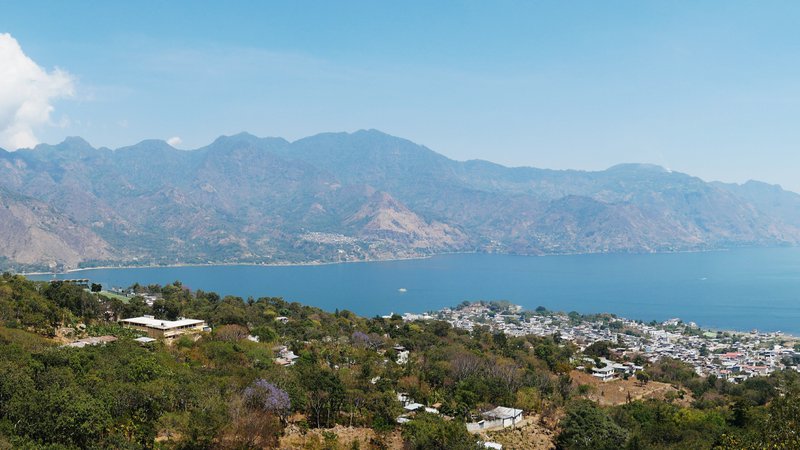
Between 1999 and 2003, global coffee overproduction and a reduction in demand in low-rise coffees greatly affected prices, resulting in many large producers switching to other crops. It is estimated that 50% of production in Guatemala comes from small producers;
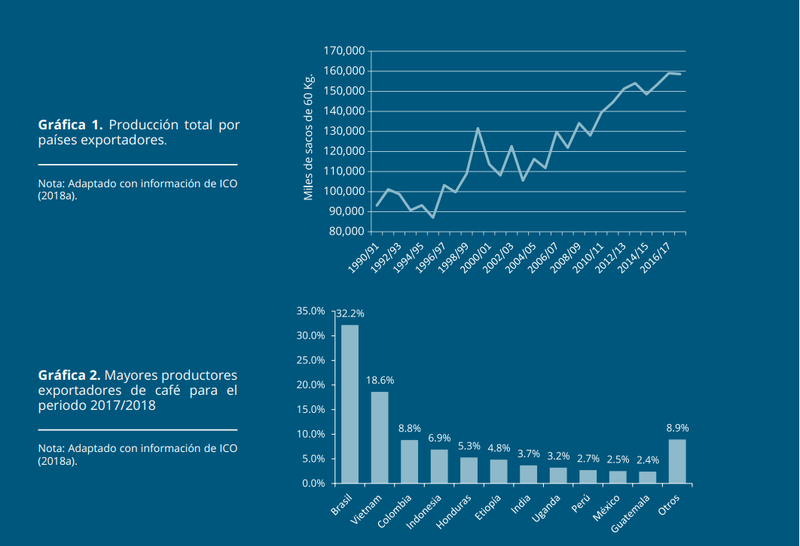
In 2018, coffee represented 8.5% of exports which places it as the second product most commercialized by the country after textiles. In addition, the coffee sector accounted for 2.5% of the product domestic gross of the country in 2016.
Guatemala is the is 10th economy in Latin America and the first in Central America. The largest sector is agriculture, with Guatemala being the largest exporter of cardamom worldwide, the fifth largest exporter of sugar and currently, the tenth of coffee.
Coffee production employs 125 thousand people, 97% of them small coffee growers responsible for 47% of the national production. Adding to that the rest of people who directly or indirectly collaborate with the tasks of coffee in Guatemala, this sector generates about 400,000 jobs in the country.
COFFEE GROWING REGIONS
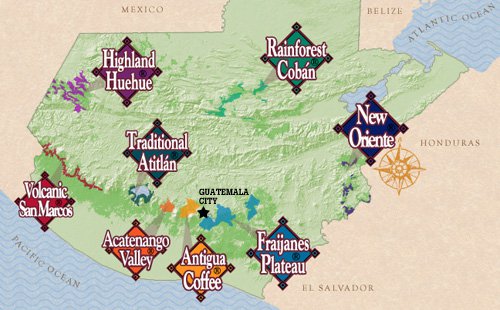
Acatenango
It is the most recently recognized coffee region, synonymous with family farms and green mountains. The grain is harvested under shadow in rich mineral soils at heights that reach 2,000 m.a.s.l.
Antigua
This is the region considered the cradle of Guatemalan coffee. The valley of Antigua is dominated by the volcanoes of Fuego, Agua and Acatenango providing reach volcanic soils characterized by their mineral wealth and good drainage. The coffee trees are grown above 1,500 m.a.s.l. with lots of sun and a dense shade that protects it from the frosts of the typical cold nights at this altitude.
Atitlan
Atitlán has the richest soil in organic matter in the country. Almost 80% of coffees in this region are grown by small producers. Coffee grows on the slopes of the Tolimán, Atitlán and San Pedro volcanoes on the shores of Lake Atitlán. Many of the farms are located at more than 1,500 m.a.s.l.
Coban
The word Cobán comes from the Maya word Keckchi "cob" which means place of clouds. Surrounded by mountains, this region located north of Guatemala is a land full of natural wealth and high levels of cloudiness, rain and cold all year. The phenomenon of constant rain known as “chipi-chipi” is characteristic of the region which, like the rest of the peculiar climatic conditions, has an influence on the physiognomy of the coffee in this area.
In Cobán, coffee grows between 1,300 and 1,500 m.a.s.l. on the slopes of mountains of clay soils and limestone that receive the tropical influence of the Atlantic basin.
Fraijanes
This region is characterized by its great heights, a lot of rain, variable humidity and an active volcano. The Pacaya volcano is the most active in the country that frequently blesses the area with an ash deposit that feeds the soil with important minerals. Additionally, in the dry season it is very sunny and clouds, fog and drizzle are common in the morning, although the soil dries quickly allowing coffee to dry in the sun.
Huehuetenango
One of the three non-volcanic regions of Guatemala, Huehuetenango is the highest and driest region thanks to the warm winds that go in the direction of the mountains from the Mexican plains of Tehuantepec. The coffee grows at a height of 2,000 m.a.s.l.
New east
Since the 50s the coffee there has been grown exclusively by small producers and it used to be one of the poorest and most remote regions of the whole country. But today, almost all mountain farms produce coffee. So the region is perceiving significant economic growth. As for the weather, the east is rainy and cloudy, and the soil contains a good balance of minerals, this being an ancient volcanic region.
San Marcos
San Marcos is the hottest region of all, but it also receives the most rain at a total of 5 meters a year. The rainy season begins early, generating the fastest flowering. As in all regions of Guatemala, coffee is grown on farms which have their own processing method. However, because during the harvest season it rains unexpectedly, growers usually begin to dry the coffee under the sun and then let it dry in mechanical dryer.
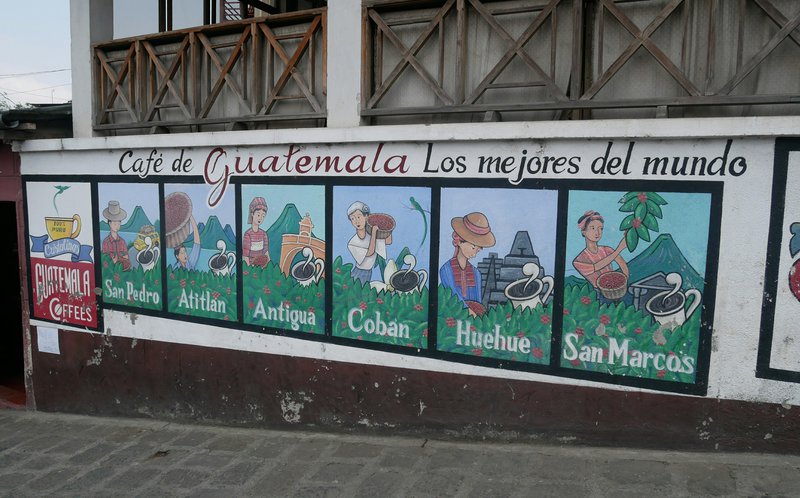
A BIT OF HISTORY
It is said that the first coffee plants were brought by religious during the Spanish conquest in Antigua, that was back at that time the capital of the country, on the second half of the 18th century. Many plantations were devastated thogh by the earthquake of 1773. Those that survived moved to the new capital, Guatemala city.
Coffee as an industry began to develop between 1850 and 1860 as plantations spread to other areas such as southwest Guatemala. At the beginning, the growth was slow since it was a relatively new crop and due to the shortage of technology and labor at that time. But quickly after in 1880, coffee became the most exported agricultural product in Guatemala. The country has earned a reputation for quality coffee since 1915, reaching the first place in the San Francisco coffee exhibition in the United States.
VARIETIES
Almost all of Guatemalan grain is arabica. The diversity of microclimates that exist in coffee regions marks the difference of profiles. We can categorized the Guatemalan varieties into two groups:
- Traditional varieties such as Bourbon, Caturra, Catuai, Pache, Typica
- Most recently introduced varieties: Geisha, Pacamara, Maragogype, Villa Sarchi, Maracaturra
However, the introduction of hybrid varieties such as Sarchimor and Catimor, resistant to rust, was also encouraged, as well as Robusta (more recently) that represents less than 2% of the country's crop.
In Guatemala, coffee is traditionally classified by altitude. In the low zones, from 760 to 1,070 meters above sea level. They are known internationally as Prime and Extra Prime.
In the intermediate zones between 1,070 to 1,200 meters above sea level, the quality tends to increase. Coffee classified as Semi-Hard and Hard.
In the highest areas from 1,300 meters above sea level, Strictly Hard Bean (SHB) is highly valued worldwide for its peculiar acidity, consistent body, defined flavor and strong aroma.
STRENGHTS
Coffee source of wealth and environmental protection
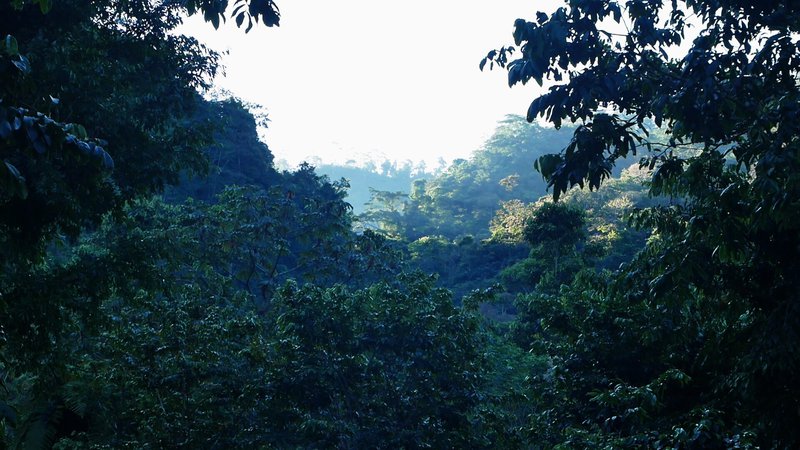
Guatemala gathers the ideal environmental offer for the cultivation of coffee: a natural isolation, a temperate climate and a fertile soil. It also benefits from an abundant coverage of forests that allow natural water sources. Today, these forests are protected as natural reserves and have a great variety of fauna and flora.
One of the most prominent characteristics of coffee production in Guatemala is that practically all coffee trees grow under the protective shade of trees of the species of the genus Inga, Erytrina and Gravilea. This coverage, besides being conducive to the good development of cherries, prevents any form of accelerated metabolism, which could deplete the life and performance of coffee plants.
Coffee plantations are a great supplier of oxygen and a good carbon fixative. In addition, the organic material that shade trees discard not only enriches the soil, but also protects it against erosion caused by the rains.
Internal consumption "in crescendo"
The coffee fashion has also arrived in Guatemala and if until a few years ago in the country there was no good coffee, now it is known that around 310,000 bags of 60 kilos are sold in the local market, 10.25% of the total exportable production -3.1 million bags in 2016/2017, according to the ICO-.
One of the main factors that are related to this increase is that young people are consuming and getting more interest to coffee. We can observe an increased variety of products in supermarkets and the progressive presence of specialty coffee shops, not only in the capital, but also in other towns in the country.
Focus on high quality coffee
Despite the fall in total production, there was an increase in the production of higher quality coffees and a consecutive improvement in the foreign exchange income. In 1995, Anacafé opted for an expansion strategy for high-quality coffees. Eight regions of origin were named to promote the production of the highest quality coffees, supporting small producers and leaving the mass production of large plantations in the background;
CHALLENGES
Cost of Guatemalan coffee production and productivity.
Anacafé estimates that production costs for a quintal gold in Guatemala is divided into 70% of labor force and 30% in inputs. As for the workforce, it considers that 65% is used for cutting coffee and the remaining 35% in cultural works. As for inputs, 80% is invested in fertilizers.
As time goes by, the prices of inputs and capital used increase while the prices of coffee fall. The minimum wage in Guatemala has grown 95% more than the price of coffee, an aspect that strongly affects the competitiveness of coffee in this country.
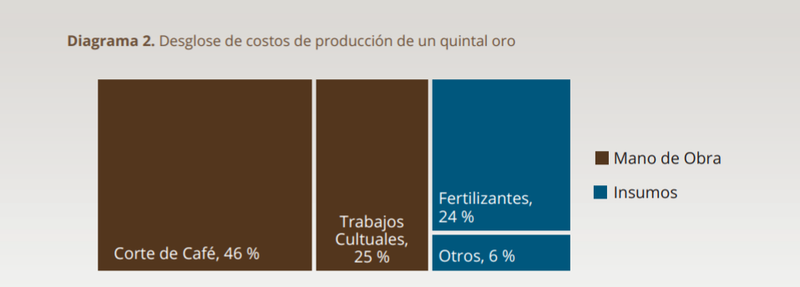
This makes coffee production less and less profitable. As a consequence, producers should reduce their costs by being more productive, improve their quality not to be merely subject to the C market, find ways to add value to their product or... abandon the crop altogether. In this context Anacafé has asked the Government to establish a policy to support the sector in addition to facilitating access to credit to producers.
ANECDOTE
La Guardiola, Guatemalan invention of Spanish father
One of the important turning points in the history of Guatemalan coffee was the invention at the end of the 19th century of the Guardiola, an automatic dryer for coffee beans. This machine was a revolutionary invention for the sector, since it allowed drying the grains quickly without cracking the parchment and evenly.
Such a revolutionary device was designed by Josep Guardiola i Grau, a young Catalan entrepreneur who lived in England and the United States, who participated in the construction of the Panama Canal as a founding shareholder and for whom coffee became passion. After living in San Francisco and making a fortune, Josep Guardiola moved to Guatemala, where in 1875 he bought a large piece of land from the church in San Pablo Jocopilas, in Bocacosta. There he raised his Chocolá estate, which although initially registered as "Sugar Mill" soon began producing coffee.
REFERENCES
- www.perfectdailygrind.com/2016/10/guia-para-baristas-8-regiones-cafetaleras-de-guatemala/
- www.forumdelcafe.com/noticias/cafe-guatemala
- El café guatemalteco, une enfoque en el mercado mundial y su productividad, Francisco Fabian Juárez Padilla, Diciembre 2018
****

8 Regions de producción en Guatemala
****
Harvest Time
Low lands | September-November
Middle lands | November-January
High lands | January-April
****
Altitude
Low lands | from 760 a 1.070m.a.s.l.
Middle lands | from 1.070 a 1200m.a.s.l.
High lands | from 1300m.a.s.l.

 Colombia
Colombia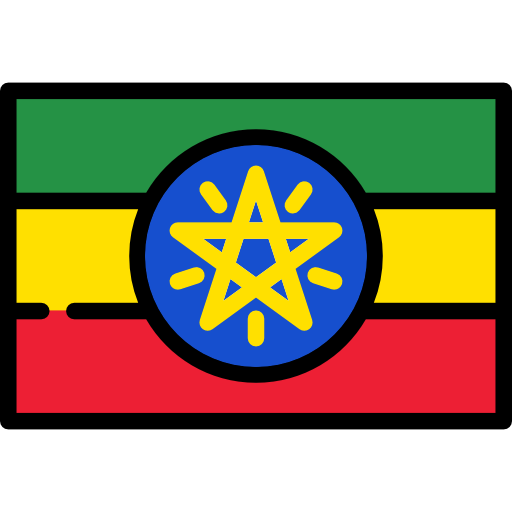 Ethiopia
Ethiopia Guatemala
Guatemala Indonesia
Indonesia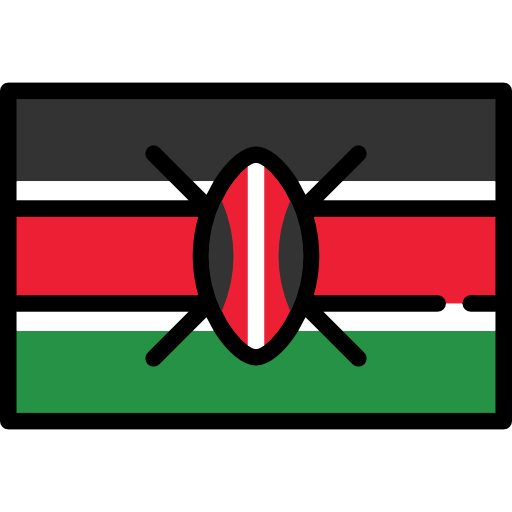 Kenya
Kenya Mexico
Mexico Philippines
Philippines Tanzania
Tanzania Uganda
Uganda